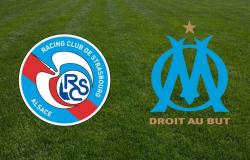Par
Ninon Oget
Published on
September 29, 2024 at 11:21 a.m.
See my news
Follow Lorraine News
The city center of Metz (Moselle) is full of unusual details: the hand sculpted on the arcades of Place Saint-Louis, a tiny house En Nexirue, golden triangles on the sidewalks or even the faces of the Maison des Têtes.
But that’s not all: at the corner of rue aux Ours and rue de la Pierre Hardie, the statue of a soldier overlooks passers-by. We asked the tourist office what it represented.
A representation of Saint Victor
This is a statue of a Roman soldier: “ [Elle] would be a representation of Saint Victor”, explains the tourist office.
In a study, the historian Jean Etienne (member of Renaissance du Vieux Metz et des Pays Lorrains) develops: “Saint Victor is systematically represented dressed in the slatted Roman skirtthe bust protected by the segmented armorthe helmet protecting the skull, ears and neck and whose weapons are the javelot and the curved round shield ».
Who is Saint Victor?
Two saints bear the name of Victor: Victor of Marseille and Victor known as African, according to the historian. Concerning Victor de Marseille, several biographies exist.
They agree that his story took place around the 3rd and 4th century in Marseille. A Christian and officer in the Roman army, he was tortured and killed during the reign of Emperor Maximian Hercules. Saint Victor of Marseille is the patron saint of torture victims, millers and cabinetmakers.
The history of Saint-Victor parish, formerly located in the city center
Another argument to prove the representation of Saint Victor, the historian points out the proximity of the statue with the parish of the same name which was located between Place de Chambre and Rue au Blé, now royal parish after the miraculous healing of Louis XV in Metz in 1744.
Decorated with numerous epitaphs from the Metz population, the Saint-Victor church was accessible by a path from Place de Chambre. In 1817, the church – transformed into housing et fodder granaries – was still partly visible at the back of the courtyard of rue au Blé.
Bought by the City for 24,500 francs in 1823 and 1824, the church was destroyed to allow the construction of the episcopal palacecurrent covered market.
It is then probable that the statue of the Roman soldier, located at the corner of rue aux Ours and rue de la Pierre Hardie, is one of the rare remains of this church.
Follow all the news from your favorite cities and media by subscribing to Mon Actu.






